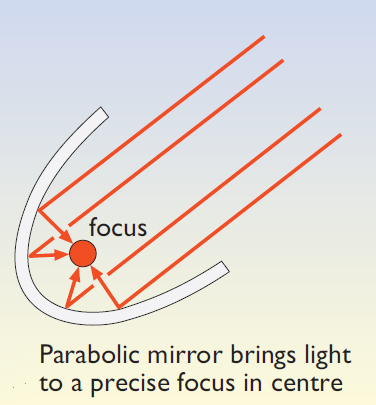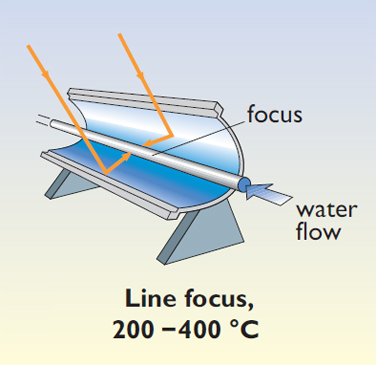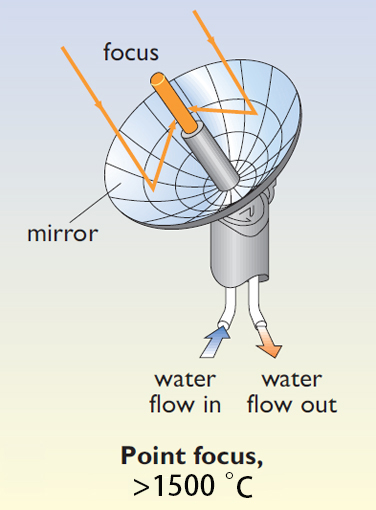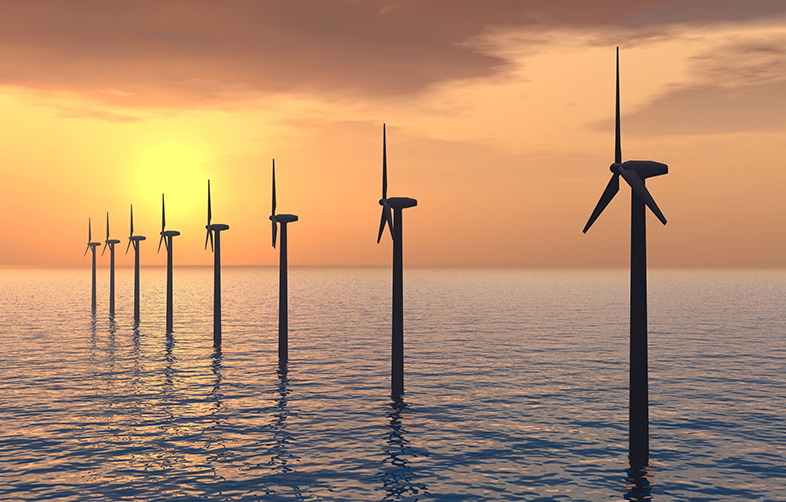9 Solar thermal electricity generation
If the Sun’s rays are concentrated using mirrors, high enough temperatures can be generated to boil water to drive steam engines, which can produce mechanical work for water pumping or, more commonly nowadays, for driving an electric generator.
This solar thermal-electric generation is known as concentrating solar power (CSP). There are trade-offs between the complexity of design of a concentrating system and its concentration ratio. The concentration ratio is the ratio of the power per unit area at the focus to the incoming power per unit area at the aperture. No concentrating collector can deliver in total any more energy than falls on its aperture, but what it does receive is all concentrated into one small area.
How do concentrating collectors work?
One common method of concentrating solar energy is to use a parabolic mirror like the one shown in Figure 21.

As you can see, rays of light that enter parallel to the axis of a mirror formed in this parabolic shape will be reflected to one point, the focus.
Activity 5 Rays of light and reflection
What happens if the Sun’s rays enter off-axis?
Answer
If the rays enter off-axis, they will not pass through the focal point, so it is essential that the mirror is made to track the Sun.

Now look at Figure 22, which shows a line focus or trough collector, mainly used for generating steam for electricity generation. Here the Sun’s rays are focused onto a pipe running down the centre of a trough. The pipe is likely to carry a high temperature heat transfer fluid such as a mineral oil. The trough can be pivoted to track the Sun up and down or east to west.
A line focus collector can be oriented with its axis in either a horizontal or a vertical plane and can produce a temperature of 200–400 °C, usually achieving a 'concentration ratio' of 50, which is adequate for most power plant systems – but the ratio required depends on the desired target temperature.

In the point focus or dish collector shown in Figure 2.24, the Sun’s image is concentrated on a steam boiler in the centre of the mirror. For optimum performance, the axis must be pointed directly at the Sun at all times, so it needs to track the Sun both up and down and east to west. A well-built and well-aimed parabolic dish collector can produce a temperature of over 1500 °C, and achieve a concentration ratio of over 1000.
Another form of concentrating solar electricity generation involves the use of power towers, which we’ll look at next.
